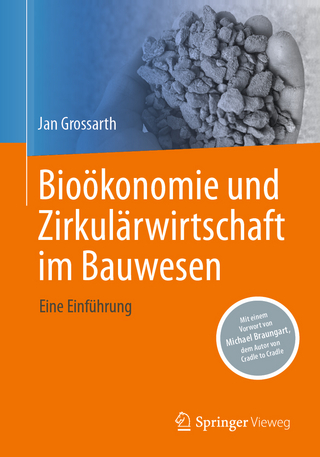
Historical Ecologies, Heterarchies and Transtemporal Landscapes
Routledge (Verlag)
978-0-8153-4775-0 (ISBN)
Interlacing varied approaches within Historical Ecology, this volume offers new routes to researching and understanding human–environmental interactions and the heterarchical power relations that shape both socioecological change and resilience over time. Historical Ecology draws from archaeology, archival research, ethnography, the humanities and the biophysical sciences to merge the history of the Earth’s biophysical system with the history of humanity.
Considering landscape as the spatial manifestation of the relations between humans and their environments through time, the authors in this volume examine the multi-directional power dynamics that have shaped settlement, agrarian, monumental and ritual landscapes through the long-term field projects they have pursued around the globe.
Examining both biocultural stability and change through the longue durée in different regions, these essays highlight intersectionality and counterpoised power flows to demonstrate that alongside and in spite of hierarchical ideologies, the daily life of power is heterarchical. Knowledge of transtemporal human–environmental relationships is necessary for strategizing socioecological resilience. Historical Ecology shows how the past can be useful to the future.
Celeste Ray is Professor of Environmental Arts and Humanities and Anthropology at the University of the South in Sewanee, Tennessee. She is the author of The Origins of Ireland’s Holy Wells and Highland Heritage: Scottish Americans in the American South, and is the editor of volumes considering Scottish identities or Southern Culture, including Transatlantic Scots, Southern Heritage on Display and Ethnicity (Volume Six of the Encyclopedia of Southern Culture). Manuel Fernández-Götz is Reader in Archaeology at the University of Edinburgh, Scotland, and winner of the Philip Leverhulme Prize. He has authored more than 150 publications on Iron Age societies and the Roman conquest, including the monographs Identity and Power: The Transformation of Iron Age Societies in Northeast Gaul (2014), and the edited volumes Eurasia at the Dawn of History (2016) and Conflict Archaeology: Materialities of Collective Violence from Prehistory to Late Antiquity (2018). He has directed fieldwork in Germany, Spain, Scotland and Croatia.
Foreword; Historical Ecologies, Heterarchies and Transtemporal Landscapes: Introductory Perspectives; SECTION ONE: Ideologies and Applications of Historical Ecology and Heterarchy; Chapter 1: Dialectic in Historical Ecology; Chapter 2: Historical Ecology and Longitudinal Research Strategies around Lake Mývatn, Iceland; Chapter 3: Gender, Feminism, and Heterarchy; Chapter 4: ‘Can you hear me now?’: Heterarchy as an Instrument and Outcome of Collective Action in Iron Age and Medieval Europe; SECTION TWO: Identifying Resilience; Chapter 5: Reconstructing African Landscape Historical Ecologies: An Integrative Approach for Managing Biocultural Heritage; Chapter 6: Resilience of Agrarian Land Use Practices in Burgundy, France: Evolving Approaches to Historical Ecology; Chapter 7: Resilience, Heterarchy, and the Native American Cultural Landscapes of the Yazoo Basin and the Mississippi River Delta; SECTION THREE: Social, Settlement and Territorial Dynamics of the European Iron Age; Chapter 8: Mapping British and Irish Hillforts; Chapter 9: Humanizing the Western Cantabrian Mountains in Northwestern Iberia: a Diachronic Perspective on the Exploitation of the Uplands during Late Prehistory; Chapter 10: The End of Iron Age Societies in Northwestern Iberia: Egalitarianism, Heterarchy and Hierarchy in Contexts of Interaction; Chapter 11: Iron Age Societies at Work: Towns, Kinship and Territory in Historical Analogy; SECTION FOUR: Ritual Landscapes and Monumentality; Chapter 12: Empires of Stone, Politics of Shadow: The Historical Ecology and Political Economy of Mortuary Monuments in Mongolia (1500 BC- 1400 AD); Chapter 13: A Landscape of Ancestors—Looking Back and Thinking Forward; Chapter 14: Civic-Ceremonial Transition at Lambityeco, Oaxaca, Mexico; Chapter 15: Sacred Wells across the Longue Durée; Afterword: Integrating Time and Space in Dynamic Systems
| Erscheinungsdatum | 13.05.2019 |
|---|---|
| Zusatzinfo | 1 Tables, black and white; 1 Line drawings, black and white; 57 Halftones, black and white; 58 Illustrations, black and white |
| Verlagsort | New York |
| Sprache | englisch |
| Maße | 156 x 234 mm |
| Gewicht | 680 g |
| Themenwelt | Geisteswissenschaften ► Archäologie |
| Naturwissenschaften ► Biologie ► Ökologie / Naturschutz | |
| ISBN-10 | 0-8153-4775-8 / 0815347758 |
| ISBN-13 | 978-0-8153-4775-0 / 9780815347750 |
| Zustand | Neuware |
| Haben Sie eine Frage zum Produkt? |
aus dem Bereich


